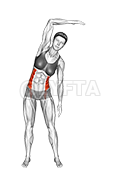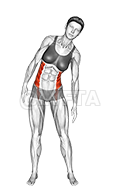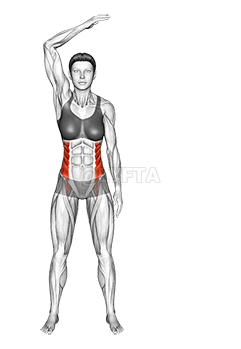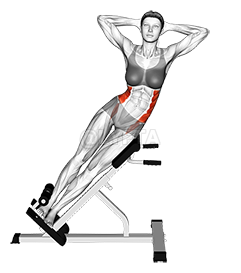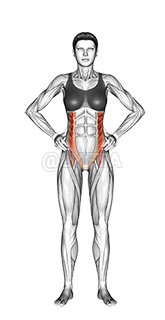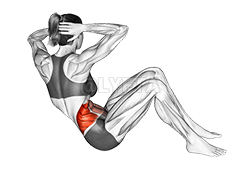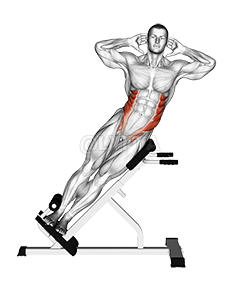
Standing Side Bend
Exercise Profile
Related Exercises:
Introduction to the Standing Side Bend
The Standing Side Bend is a simple yet effective exercise that primarily targets the obliques, enhancing core strength and flexibility. It is suitable for individuals of all fitness levels, as it can be easily modified to match one's capability. People may want to incorporate this exercise into their routine to improve posture, enhance balance, and promote better breathing, while also aiding in the reduction of back and neck pain.
Performing the: A Step-by-Step Tutorial Standing Side Bend
- Slowly raise one arm, keeping it straight, over your head and lean your upper body in the opposite direction, bending at your waist.
- Hold this position for a few seconds, feeling the stretch along the side of your body.
- Slowly return to the starting position and repeat the process with the other arm.
- Continue alternating sides for your desired number of reps or time period.
Tips for Performing Standing Side Bend
- Maintain Proper Posture: When performing the exercise, ensure that you are standing tall with your feet hip-width apart. Your shoulders should be relaxed and your chest open. Avoid hunching your shoulders or bending forward or backward; the movement should be lateral, bending only to the side.
- Control Your Movement: A common mistake is to rush through the exercise or use momentum to swing from side to side. This can lead to improper form and potential injury. Instead, focus on slow, controlled movements. Bend to the side as far as you can while maintaining control, then slowly return to the starting position.
- Engage Your Core: The Standing Side Bend primarily targets your obliques, but it’s also an excellent
Standing Side Bend FAQs
Can beginners do the Standing Side Bend?
Yes, beginners can definitely do the Standing Side Bend exercise. It's a simple and effective exercise that helps to increase flexibility and strength in the core and spine. However, as with any exercise, it's important for beginners to start slowly and focus on maintaining good form. If any discomfort or pain is felt, they should stop the exercise and consult with a fitness professional or a healthcare provider.
What are common variations of the Standing Side Bend?
- Another variation is the Half Moon Pose, which incorporates a balance element by standing on one leg and bending to the side.
- The Revolved Side Angle Pose is a more challenging variation that includes a twist of the torso and a deeper bend to the side.
- The Gate Pose is a kneeling variation of the Standing Side Bend, offering a gentler option for those with balance difficulties.
- Lastly, the Crescent Moon Pose is a variation performed while standing on the knees, stretching one arm overhead and leaning to the side.
What are good complementing exercises for the Standing Side Bend?
- The Extended Triangle Pose also complements the Standing Side Bend as it stretches and strengthens the thighs, knees, and ankles, thus improving the flexibility and strength needed for the side bend.
- The Upward Salute Pose is beneficial as it stretches the belly, improves digestion, and strengthens the legs and arms, enhancing the overall benefits of the Standing Side Bend.
Related keywords for Standing Side Bend
- Body weight exercise for waist
- Side bend workout
- Standing side bend routine
- Waist-targeting exercise
- Bodyweight side bend
- Waist toning exercises
- Standing waist workout
- Side bend exercises for abs
- Body weight waist exercises
- Standing side bend for core strength
